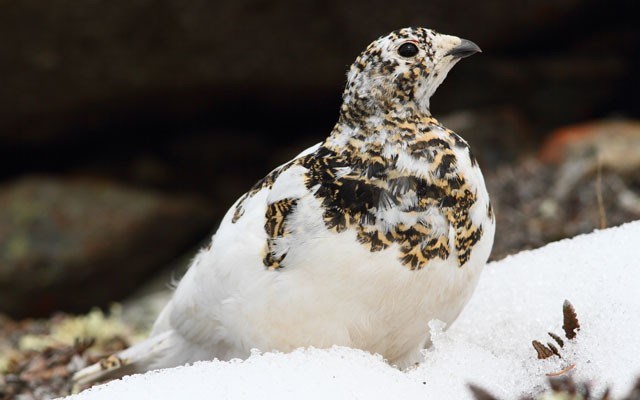Autumn's polar outflow winds were not kind to the skiers, providing frozen ground with little snow cover and frozen pipes.
The events also chased southward many of Whistler's birds with few replacements arriving from the north. Our early December transect count saw few birds in the woeful 15 species tallied. Two weeks later, the Christmas bird counts in the Sea to Sky corridor were underway.
Would there be many birds left to count or would there be unusually high numbers at our two coastal count areas Lower (outer) Howe Sound and Squamish?
The data for the eight count locales in the corridor is now on hand. A surprising record 133 species were seen, but the number of birds tallied (27,810) was below average (30,130), though higher than five other years in the 11 years of records.
Here is how the counts shake out by locality (number of species/birds counted): Lower Howe Sound (81/8,582), Squamish (83/9,561), Whistler (41/1,990), Pemberton-Mt. Currie (57/2,175), Darcy-Devine (39/552), Lillooet (64/1,626), Hat Creek (21/218), and Ashcroft-Cache Creek (39/3,106).
Surprisingly, Squamish was the leader, edging out the island-studded and marine waters of Lower Howe Sound, the area least affected by the cold outflow winds. However, the outer Sound easily led the parade in highest counts for 46 species and it had 18 others that were not seen anywhere else in the corridor. Squamish weighed in with 29 highest counts and 15 species not seen elsewhere.
For the impoverished interior locations, there were some surprises.
Whistler had the highest counts on seven species and three not seen elsewhere. Their staggering count of 253 varied thrush added significantly to the total record tally of 382, which more than doubled what had been the previous highest count.
Pemberton added in a big way to new record-high counts on pileated woodpeckers (40) and Brewer's blackbirds (223); Lillooet led the parade in adding to the record counts on dark-eyed Oregon juncos and was the only contributor to the new high of 22 morning doves. Finally, Cache Creek-Ashcroft, with its helpful landfill for Vancouver's garbage, upped the ante on new records for starlings (1,426) and the newly arriving evasive pest species: the Eurasian collared-dove (330). Darcy-Devine didn't have any records but had the only trumpeter swans (16), Cassin's finch (8) and a good count on ruffed grouse (6).
Of the 133 species seen, three were new to the count: a sandhill crane at Squamish, a Harris' sparrow at Lillooet, and a feral ring-necked pheasant at Hat Creek. The latter was one of a hundred released in the autumn by a local rancher. So, over the 11 years of counts we have now seen 191 species, two thirds of them in 2013.
Species that were seen at every locale in 2013 are few: bald eagle (Squamish contribution always significant), Northern flicker (especially the 64 in the outer Sound), raven (Cache Creek's landfill being the prime source), black-capped chickadee (but a record low count!), American dipper (the Seton River spawning channels are always the significant source), varied thrush (kudos to Whistler once again) and the dark-eyed junco (with all localities having significant numbers).
The 10 most common species tallied, however, were as follows: Glaucous-winged gull (5,997), dark-eyed Oregon junco (2,230), surf scoter duck (1,579), starling (1,426), bald eagle (1,396), pine siskin (1,358), Barrow's golden-eye duck (1,124), mallard (1,037), Northwest crow (943) and Raven (882). The prime source for the siskins was Whistler (984); throughout all other counts in southwest B.C., there were very low counts on this species.
Not to go unnoticed were record, very-low counts on common and Pacific loons, pied-billed grebe, greater scaup (duck), surfbird, red-breasted nuthatch, pine grosbeak (Whistler's alpine specialty) and, for the first time, there were no killdeer or black turnstones! Fifty-five other species also had below-average counts as opposed to 32 with above-average counts. Record highest were also noted for the following: Anna's hummingbird (100), green-winged teal 959), pelagic cormorant (51), Canada goose (723), mallards (1,037), and Northern shovelor duck (six).
As to be expected, there are marine to interior trends for many species, as well as elevation trends with others. Waterfowl, kinglets, chickadees, hummers, and shorebirds, including all gull species, were concentrated on the marine front with the unusual exception of the trumpeter swans at D'Arcy!
The open farmlands of Pemberton brought in the raptors, which was also the focal point for several woodpecker species, blackbirds and Steller's jay. The leeward eastern side of the mountains countered with black-billed magpies, Townsend's solitaire, doves, the three nuthatch species, game birds and Bohemian waxwings.
For alpine trends, the data collection for this year was hampered by stormy conditions. As usual, Whistler garnered a single white-tailed ptarmigan, possibly the only one seen anywhere in North American counts. Gray jays were few at three subalpine locales, and the Clark's nutcrackers were at unusual low elevations.
So, the wrap-up: the outflow winds definitely reduced the numbers of birds seen in all but the coastal counts. Everywhere, however, the tallies on small species were relatively sparse; chickadees, nuthatches, wrens, kinglets and several members of the finch family were hard to find.
Whistler's count was shy on almost all species, and the 41 nuthatches seen over the seven-day count period was subpar.




